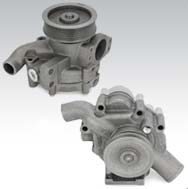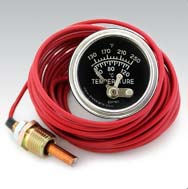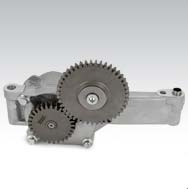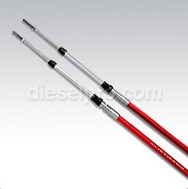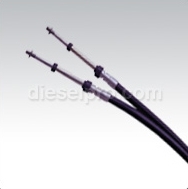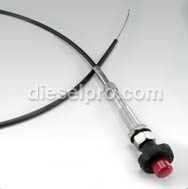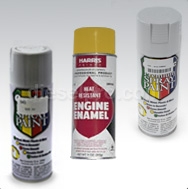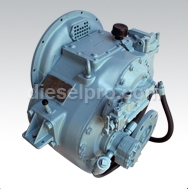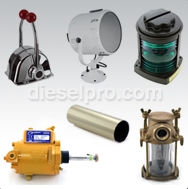The Caterpillar C7 is a mid-range, inline 6-cylinder diesel engine introduced in 2003 as a successor to the popular 3126. Built for industrial, power generation, and on-highway use, the C7 was designed to meet EPA Tier 3 and Tier 4 Interim emissions standards, while offering strong torque, reliable uptime, and efficient fuel use. Though no longer used in new on-highway applications in North America, the C7 remains a widely supported engine in construction, marine auxiliary, generator, and repower markets. The C7 was available in both mechanically governed and electronically controlled configurations, depending on emissions tier and application. Its foundation on the ACERT (Advanced Combustion Emissions Reduction Technology) platform marked Caterpillar’s transition to modern fuel injection and emissions strategies in the early 2000s. Known for its compact size, durable structure, and solid torque curve, the C7 continues to see widespread use in off-highway and stationary engine roles, making it a strong aftermarket platform for global repower projects and continuous-duty equipment. Specification Details Engine Configuration Inline 6-cylinder, 4-stroke diesel Displacement 7.2 Liters (441 cubic inches) Bore x Stroke 105 mm x 127 mm Compression Ratio 16.5:1 Aspiration Turbocharged or Turbocharged and Aftercooled Power Output Range 210 – 330 HP (157 – 246 kW) @ 2,200 RPM Peak Torque Up to 925 lb-ft (1,254 Nm) @ 1,440 RPM Fuel System HEUI (Hydraulic Electronic Unit Injection) or Common Rail Emissions Compliance Tier 3 / Tier 4i / Euro III Aftertreatment (Tier 4i) NOx Reduction Only (no DPF in early versions) ECM and Diagnostics ADEM III / IV Engine Control Module Cooling System Water-cooled via radiator Dry Weight Approx. 1,300 – 1,450 lbs (590 – 658 kg) Oil Capacity 16 – 20 liters (varies by sump design) Fuel Consumption ~0.32 – 0.35 lb/hp-hr depending on load The Caterpillar C7’s blend of power density, electronic control, and emissions compliance made it a popular choice in multiple sectors—from jobsite equipment and mobile machinery to generator sets and repower platforms. The C7 engine is frequently used in mid-range generator sets, typically in the 100–175 kW output range. It provides reliable continuous power and excellent load recovery, making it a workhorse in stationary and mobile genset markets. Standby gensets for commercial buildings, healthcare, and banking Prime power for construction sites, remote bases, and field operations Trailer-mounted generator rentals Export generator sets for Tier 3-compliant markets Mobile utility units and auxiliary shipboard power Its electronically controlled versions are often paired with digital generator controllers, enabling precision load management and remote diagnostics. Many OEMs integrated the C7 into medium-duty construction machines, where reliable torque and smooth operation were key to productivity. Wheel loaders and track loaders Mid-size excavators (18–22 ton class) Backhoe loaders Off-road dump trucks and articulated haulers Road graders and motor scrapers The C7’s consistent power and compatibility with Tier 3 emissions strategies made it especially effective in Tier-regulated environments without aftertreatment complexity. In the agricultural sector, the C7 engine powers mid- to large-scale machinery and fixed installations requiring high output and low fuel usage. Diesel-powered irrigation pump systems Mobile feed processing trailers Agricultural gensets for large barns and storage facilities Grain dryers and crop-processing modules Sprayer chassis and forage harvesters Its durability under constant load makes it particularly valuable in large farming operations requiring long daily run times and minimal downtime. The C7's performance characteristics support a wide range of industrial and stationary machinery that require continuous torque and high load-handling capacity. Hydraulic power units and skid systems Stationary compressors and blowers Portable diesel welders and gensets Mining support units and dewatering pumps Oilfield equipment including mud pumps and coil tubing systems These applications benefit from the C7's long service intervals, remote monitoring options (where applicable), and proven cooling capabilities. Though the C7 was not widely used for propulsion, it was installed in marine generator sets and auxiliary power systems for commercial and work vessels. Shipboard backup power Hydraulic pump drives Marine fire pumps Bilge and transfer pump engines Powering winches or refrigeration systems Its fuel efficiency and ability to hold power under load made it a trusted auxiliary engine in commercial marine fleets and harbor service vessels. Due to its compact design, wide emissions tier range, and strong global service network, the C7 continues to be used in repower and retrofit applications, especially in markets where Tier 3 compliance is still acceptable. Replacing older mechanical Cat engines (3126, 3116, etc.) Upgrading genset engines in container or trailer units Export equipment for Latin America, Africa, or Southeast Asia Re-powering of specialized equipment (custom utility trailers, mobile shops) Military and disaster-response vehicles converted to off-highway use The C7’s ability to meet varying emissions tiers makes it highly adaptable for both legacy and modern installations. The Caterpillar C7 diesel engine remains a cornerstone in the mid-horsepower category, offering a balance of power, emissions compliance, and rugged reliability for industrial users around the world. From generator sets and excavators to stationary pumps and agricultural power units, the C7 is engineered to handle demanding workloads with minimal downtime. Marine CAT C7 Coolant System Specific Component Maintenance Life
Parts For Caterpillar C7
-
Select Parts Category
 Loading...
Loading... Engine Specifications & Applications of the Caterpillar C7 Engine
Overview of the Caterpillar C7
Caterpillar C7 Engine Specifications
Applications of the Caterpillar C7 Engine
1. Power Generation
Generator Applications:
2. Construction & Heavy Equipment
Common Construction Machines:
3. Agricultural and Irrigation Equipment
Agricultural Applications:
4. Industrial and Material Handling Applications
Industrial Applications:
5. Marine Auxiliary Use
Marine Use Cases:
6. Repower and Export Installations
Repower Applications:
Conclusion
Additional Resources



 Free US Calls: 1-888-433-4735
Free US Calls: 1-888-433-4735 International: 305-545-5588
International: 305-545-5588






